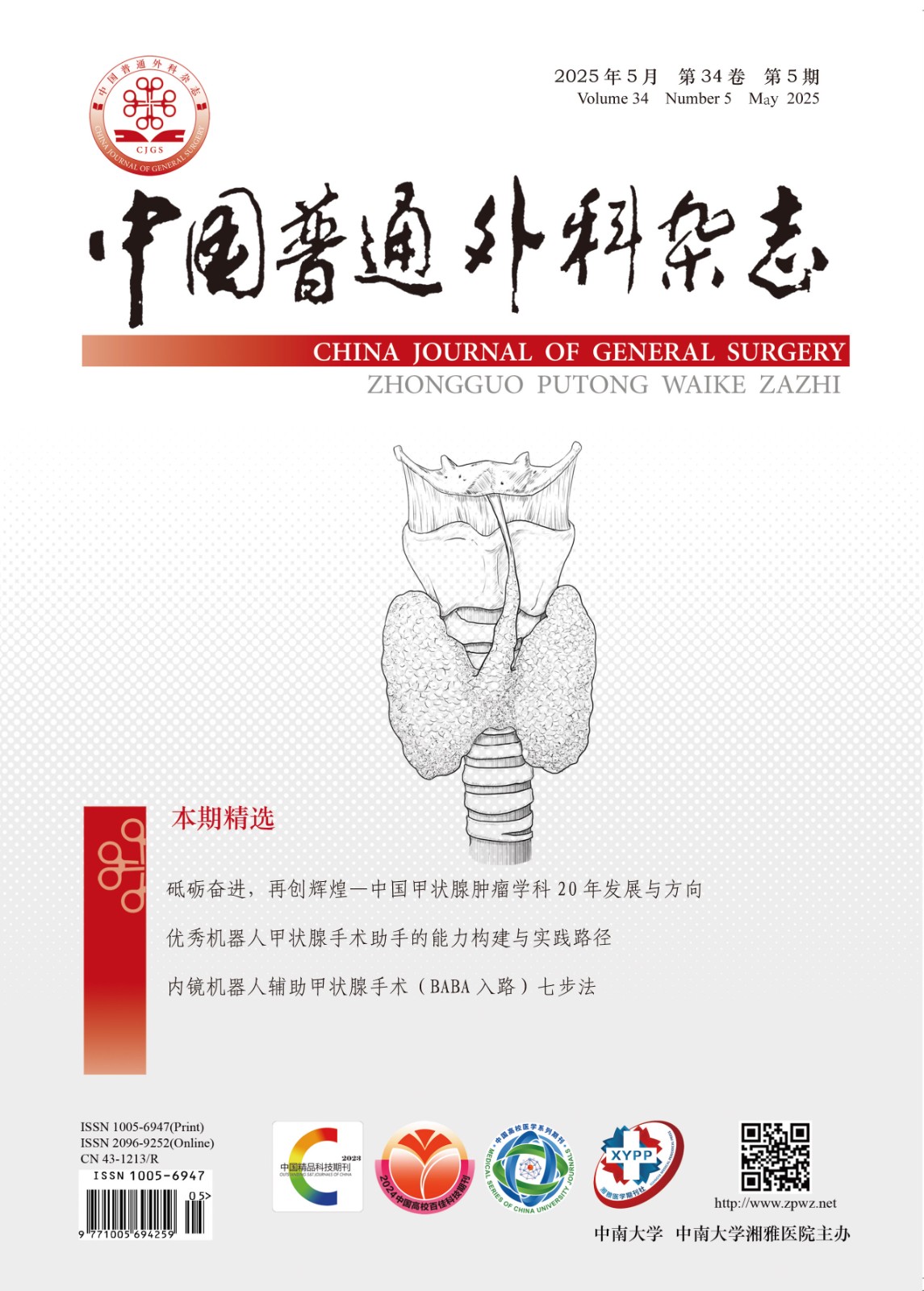Abstract:Objective: To investigate the clinicopathologic and neck metastasis features of multifocal papillary thyroid cancer (PTC).
Methods: The clinical data of 323 patients undergoing surgical treatment in Department of Thyroid Surgery, the First Affiliated Hospital of Zhengzhou University from June 2016 to October 2016, who had pathologically confirmed PTC were retrospectively analyzed. Of the patients, 148 cases had multifocal PTC and 175 cases were unifocal PTC.
Results: No significant difference was seen in age, gender and maximal tumor diameter between patients with multifocal PTC and unifocal PTC (all P>0.05), but the former showed higher incidence of central neck metastasis (P<0.001), lateral neck metastasis (P=0.028), and extrathyroidal extension (P<0.001) than those in the latter. Among patients with multifocal PTC, the incidence of central neck metastasis (P=0.010), lateral neck metastasis (P=0.018) and extrathyroidal extension (P=0.020) in cases with 3 or more lesions were significantly increased compared with cases with 2 lesions. Multivariate analysis showed that the maximal tumor diameter (P=0.005) and tumor number (P=0.006) were independent risk factors for central neck metastasis in multifocal PTC.
Conclusion: Compared to unifocal PTC, multifocal PTC has relatively higher invasiveness, is more likely to develop metastasis and invasion, for which total thyroidectomy with central compartment neck dissection is recommended as the standard treatment, and lateral neck dissection should be strongly considered in those with lateral neck lymph node enlargement.

